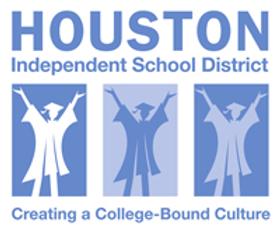As more parents voice concerns about the dangers of cyberbullying, one California school district has taken matters into its own hands. The Glendale Unified School District has hired an outside company to track students on social media and send reports of the results to school officials daily. The purpose of the new program is to protect students from potential trouble, including cyberbullying, suicidal thoughts, and even truancy. However, some are questioning whether the school district is blatantly infringing on students’ privacy rights in their quest to keep students a little safer.
Company to Analyze Social Media Posts
The reports that the Glendale district has hired Geo Listening, a social media monitoring service that specializes in tracking social media for school campuses. Glendale piloted the program on a smaller scale last year, hiring the company to monitor the social websites of students at Hoover, Glendale, and Crescenta Valley high schools. This year, the district will pay Geo Listening more than $40,000 to expand their services to eight high and middle schools.
According to the , their monitoring service reports daily to school officials about social website activity. Those daily reports break down social media messages into the following categories:
- Cyber-bullying and bullying
- Hate, harm, and despair
- Crimes and vandalism
- Truancy
- Substance abuse
The report also shares the frequency and severity of student posts within these categories. All of the information is taken off of public social media pages; texts, emails, and private messages are not monitored.
Glendale’s Decision to Go to Monitoring
The reports that the school district decided to pilot the monitoring program after a student from the district, Drew Ferraro, committed suicide by jumping off the roof of Crescenta Valley High School. Bullying was allegedly a factor in the death of this teen.
“With modern technology, unfortunately, we have to stay a step ahead of the kids,” Dr. Richard Sheehan, school district superintendent, told the International Business Times. “The whole purpose is student safety. Basically, [the monitoring service] monitors for keywords where if a student is considering harming themselves, harming someone else.”
Sheehan also told the International Business Times he believes the system helped to avert another tragedy last year. The school administrator was alerted when a student's disturbing posts were discovered. The student’s family was notified, and the student was given the appropriate help.
This video reports on the Glendale Public Schools' decision to hire a social meida monitoring firm.
Helping Students or Invading Privacy?
According to the , the new system monitors around 13,000 high school and middle school students in the Glendale school district. Social habits during and after school hours are tracked and reported to school administrators daily. While some see this as a positive step toward protecting students from an increasingly prevalent problem, others see it as a blatant violation of student privacy.
“I think it’s a bad idea because everybody deserves their privacy,” one Glendale student was reported saying in the Huffington Post.
The Los Angeles Times reports that some parents have also raised concerns about the invasion of student privacy, including one parent who called the new program “big brother-ish.” That parent, Yalda T. Uhls, who is also a researcher at the Children’s Digital Media Center at UCLA, said students need to know their social media posts are under surveillance.
Despite concerns, Uhls also told the Los Angeles Times she is glad to see the school district make an effort to combat bullying in the schools. Uhls called the program “one piece in a school’s tool kit to combat that problem,” although she added that it should be a relatively small piece of the puzzle.
Some parents and students also voiced displeasure with the school district spending money on this program rather than using the funding toward education programs and resources. School board member Christine Walters countered those arguments, telling the Los Angeles Times, “Similar to other safety measures we employ at our schools, we want to identify when our students are engaged in harmful behavior.”
When questioned about the privacy issue, Geo Listening reiterates the fact that the company only monitors public posts, which students know can be seen by a broad range of viewers. The company said in the Huffington Post, “All of the individual posts we monitor on social media networks are already made public by the students themselves. Therefore, no privacy is violated.”
Prevalence of Cyber-Bullying
Despite disagreements over how to handle the problem, few would argue that cyberbullying has become a prevalent problem among schoolchildren in the United States. According to , 95 percent of teens who have used social media have witnessed mean behavior toward other teens on those sites. Of that number, 66 percent say they have seen others join in on the cruel online behavior.
This video explains what cyberbullying is.
According to parent surveys, around 85 percent of students between the ages of 13 and 17 have a social media account. One-third of teens say they have been victims of cyberbullying, and more than 52 percent of parents worry their children will be bullied through social media. Most teens also agree it is easier to bully someone online without getting caught.
With concerns on the rise over the impact of cyberbullying on today’s youth, the Glendale school district is attempting to take steps to minimize the problem. Perhaps social media monitoring will indeed be one tool school districts can use to protect students from the traumatizing effects of online bullies.
Questions? Contact us on Facebook. @publicschoolreview
#publicschools #cyberbullying















